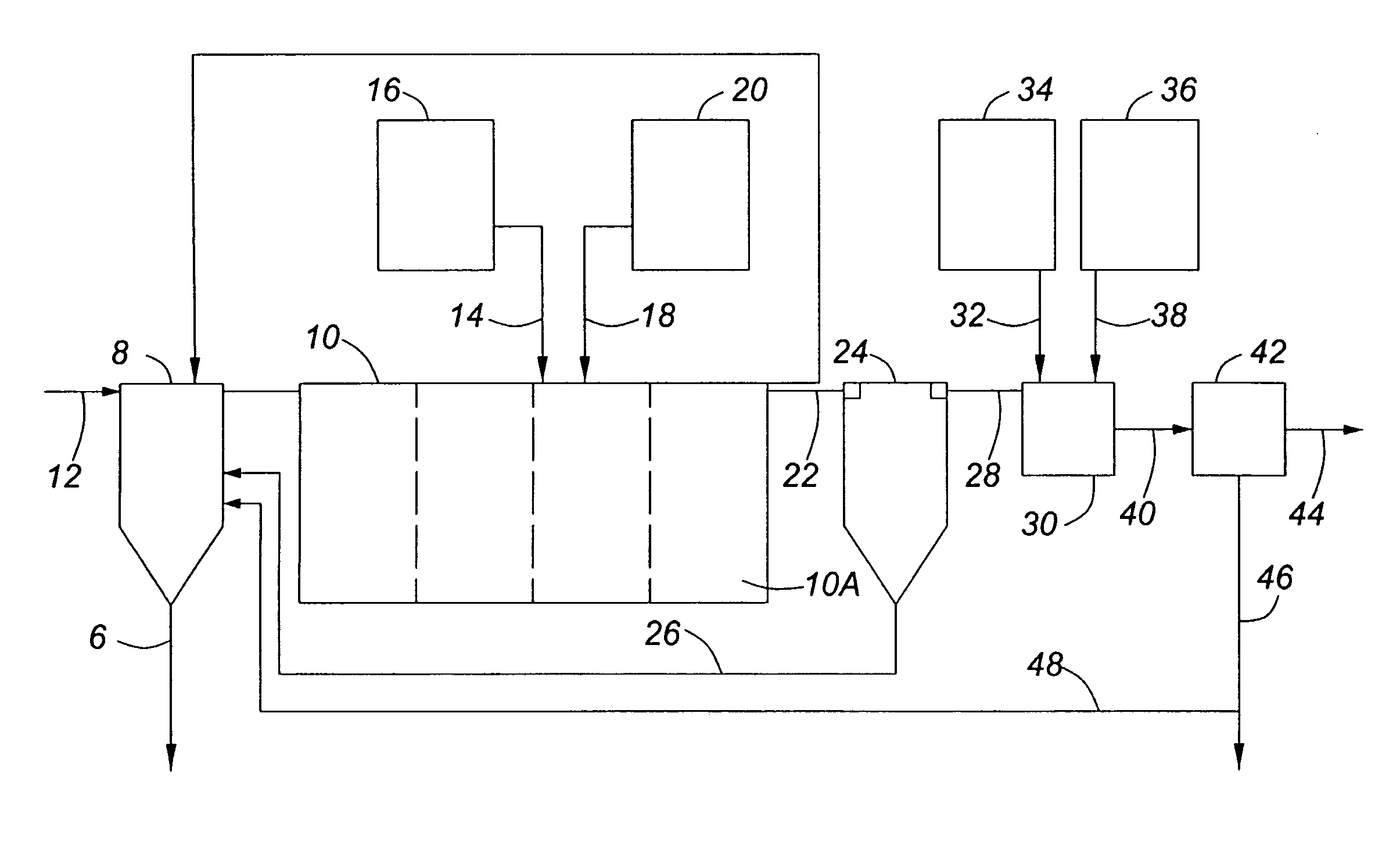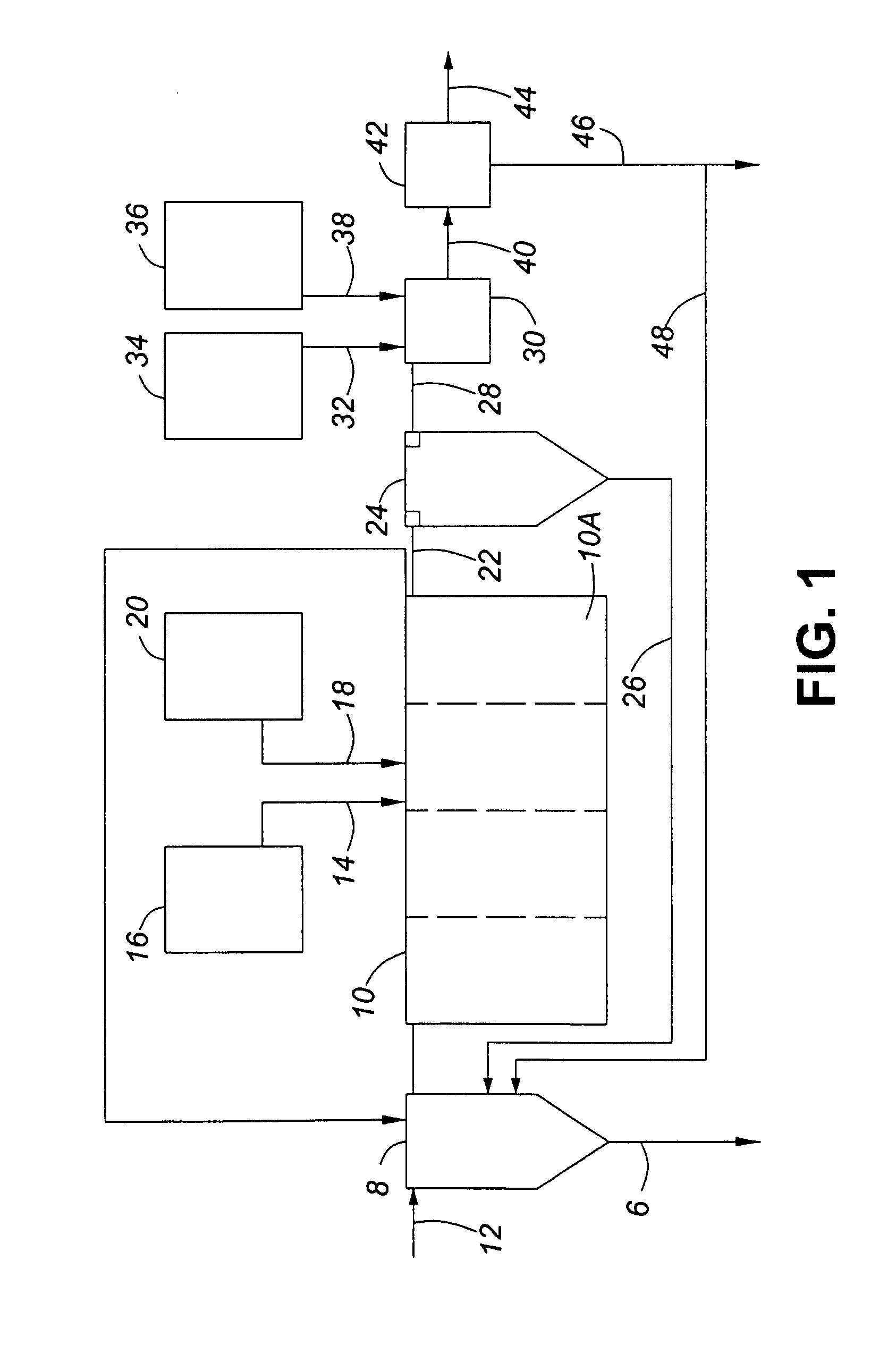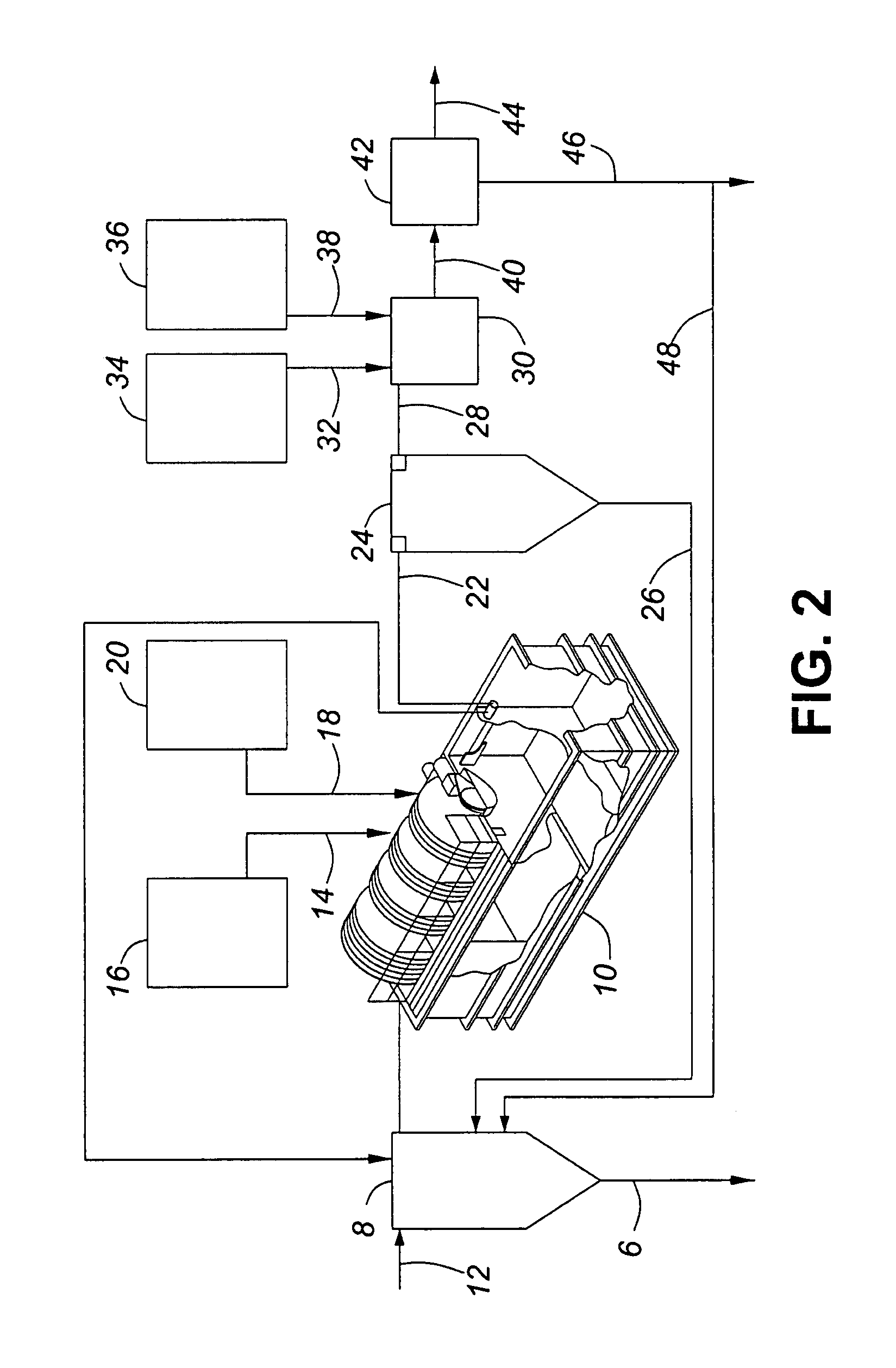Removal of phosphorous from wastewater
a technology for removing phosphorous and wastewater, applied in water treatment multi-stage treatments, water/sludge/sewage treatment, differential sedimentation, etc., can solve the problems of reducing avoiding phosphorous removal to very low levels with any degree of consistency, etc., to reduce the ph of wastewater, save coagulant/flocculent costs, and minimize the use of coagulant/flocculent.
- Summary
- Abstract
- Description
- Claims
- Application Information
AI Technical Summary
Benefits of technology
Problems solved by technology
Method used
Image
Examples
Embodiment Construction
[0093]As seen in FIG 1, a first chamber is a primary treatment chamber 10 which may be of any construction of apparatus which is presently used in the purification and treatment of wastewater and serves as a preliminary treatment zone. For example, in a preferred embodiment in the present case, this treatment chamber may be a Rotating Biological Contactor (RBC). This primary treatment chamber 10 provides a primary treatment zone for the production of filterable precipitated flocs dispersed in the wastewater. A wastewater inlet feed line, pipe or conduit 12 is connected to the primary settling tank 8 to allow the sedimentation of significant solids. The primary settling tank 8 overflows into the treatment chamber 10 for the introduction of wastewater which is contaminated with phosphorus. The phosphorus may be in a number of forms, for instance as soluble, insoluble or complex phosphorus including within organic matter. A coagulant / flocculent inlet line, pipe or conduit 14 is connect...
PUM
| Property | Measurement | Unit |
|---|---|---|
| concentration | aaaaa | aaaaa |
| pH | aaaaa | aaaaa |
| pH | aaaaa | aaaaa |
Abstract
Description
Claims
Application Information
 Login to View More
Login to View More - R&D
- Intellectual Property
- Life Sciences
- Materials
- Tech Scout
- Unparalleled Data Quality
- Higher Quality Content
- 60% Fewer Hallucinations
Browse by: Latest US Patents, China's latest patents, Technical Efficacy Thesaurus, Application Domain, Technology Topic, Popular Technical Reports.
© 2025 PatSnap. All rights reserved.Legal|Privacy policy|Modern Slavery Act Transparency Statement|Sitemap|About US| Contact US: help@patsnap.com



